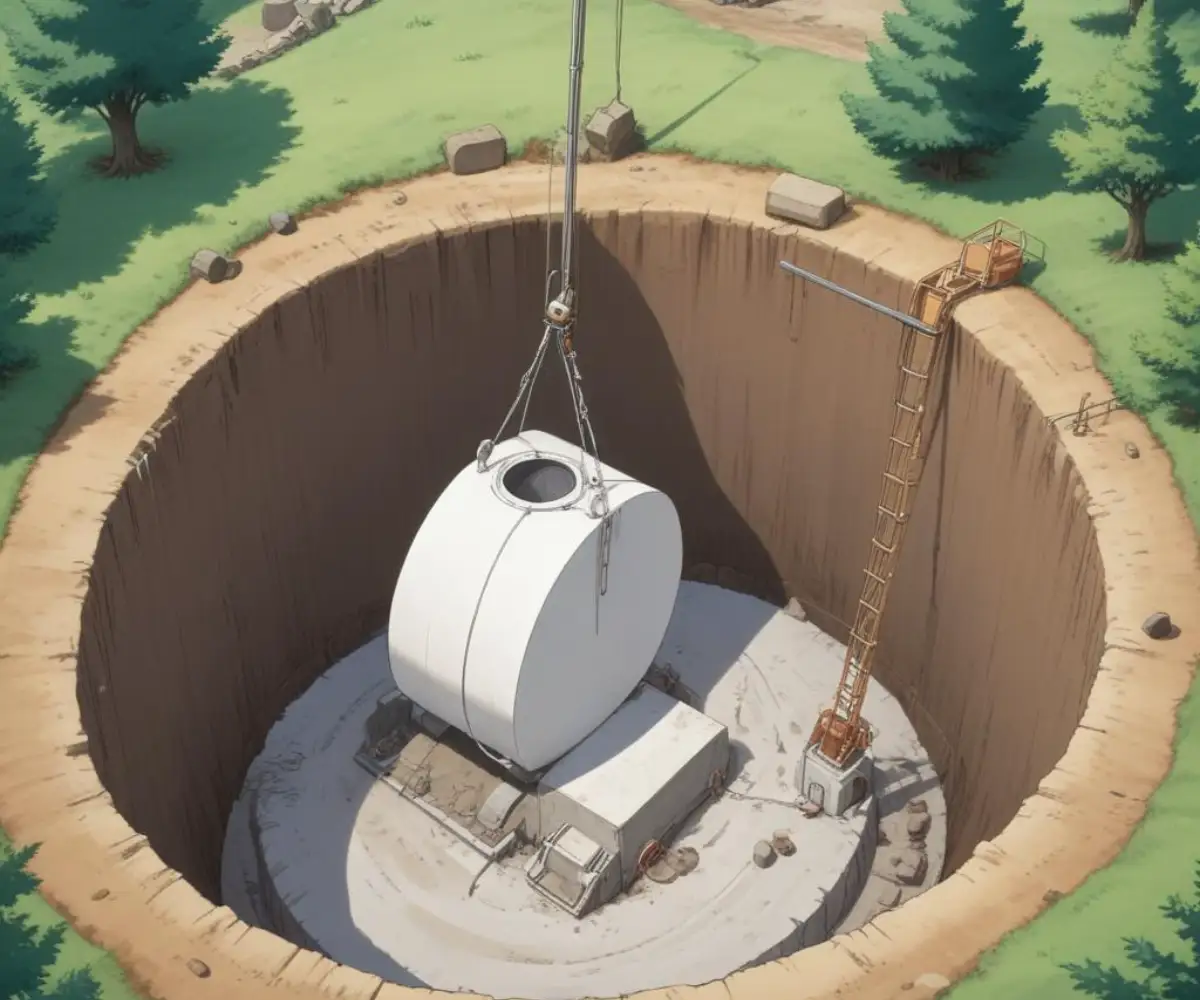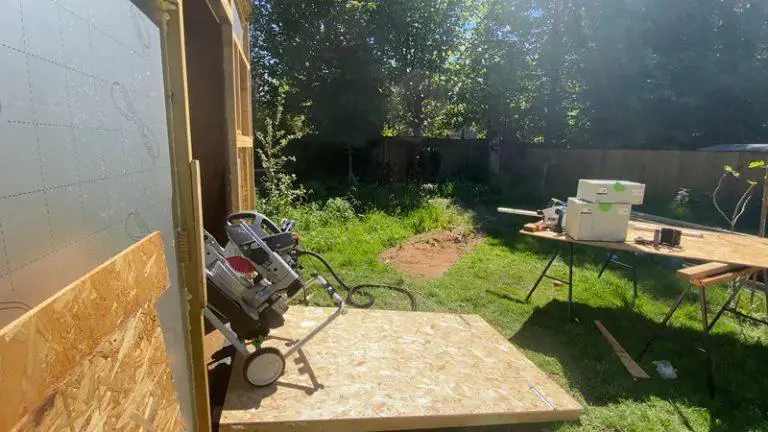Is Converting a Holding Tank to a Septic System Feasible?
Are you tired of the constant, costly cycle of pumping your holding tank? That recurring bill is a budget-killer, and the ever-present fear of an overflow is a nightmare for any homeowner.
You’ve likely wondered if there’s a better way. Can you finally ditch the pump truck schedule and gain some real wastewater independence? The answer is a resounding yes.
You'll Learn About
The Problem: The Bottomless Pit of Holding Tank Costs
A holding tank is exactly what its name implies: a sealed container that simply holds wastewater. Once it’s full, it must be professionally pumped out. This is not a suggestion; it’s a requirement.
This leads to relentless, predictable expenses that can add up to thousands of dollars per year. It’s a significant financial drain for a system that offers no long-term wastewater treatment solution for your property.
Holding Tank vs. Septic System: Understanding the Key Differences
Many people use the terms “holding tank” and “septic tank” interchangeably, but they are fundamentally different. A holding tank is a passive storage container. A septic tank is the heart of a dynamic, living wastewater treatment system.
Understanding this distinction is the first step toward solving your wastewater woes. A septic system actively treats and disposes of your household wastewater right on your property, freeing you from the pump truck.
What is a Holding Tank?
Think of a holding tank as a sealed box buried underground. All the water from your toilets, showers, and sinks flows into this tank. It has no outlet and provides no treatment.
When it reaches capacity, an alarm usually sounds, and you must call a service to pump it empty. It’s a temporary solution often used for properties where a full septic system isn’t feasible.
What is a Septic System?
A septic system is a complete, multi-stage wastewater treatment solution. It consists of two primary components: the septic tank and a drain field (also called a leach field or absorption field).
The septic tank separates solid waste from liquid effluent. Bacteria inside the tank begin to break down the organic solids. The relatively clear liquid then flows out to the drain field to be naturally and safely absorbed by the soil.
| Feature | Holding Tank | Septic System |
|---|---|---|
| Primary Function | Wastewater Storage Only | Wastewater Treatment & Disposal |
| Key Components | A single, sealed tank | Septic tank and a drain field |
| Wastewater Output | None (sealed system) | Treated effluent is released to the drain field |
| Recurring Costs | Very High (frequent pumping) | Very Low (pumping every 3-5 years) |
| Property Value | Can negatively impact value | Increases property value and appeal |
| Environmental Impact | High carbon footprint from pump trucks | Low-impact, natural treatment process |
Can You Actually Convert a Holding Tank into a Septic Tank?
This is the most common question, and the answer is critical. No, you cannot use your existing holding tank as a septic tank. A true holding tank lacks the internal baffles and design required for separating solids and scum.
Attempting to use a holding tank as a septic tank would send solid waste directly into the drain field, causing it to fail almost immediately. The project is not a simple “conversion” but rather a full replacement of your holding tank with a new, complete septic system.
Is Your Property a Candidate? The Essential Pre-Conversion Checklist
Before you can begin, you must determine if your property can even support a septic system. This process is heavily regulated by local health departments to protect groundwater and public health. A professional site evaluation is mandatory.
The All-Important Percolation (Perc) Test
The most critical factor is your soil’s ability to absorb water. A professional will perform a percolation test, which involves digging holes in the proposed drain field area and measuring how quickly water drains away.
The results of this test determine if a conventional septic system is possible and how large the drain field needs to be. Poorly draining soil may require an alternative, more complex system.
Property Size and Setback Requirements
Local codes dictate minimum distances that a septic tank and drain field must be from buildings, property lines, wells, and water bodies. You need enough suitable land to accommodate the entire system while respecting these setbacks.
This is not just a regulatory hurdle; it’s a safety measure. You wouldn’t want your well contaminated, nor would you want a structural issue like a gap between chimney and house to be complicated by a poorly placed septic system.
Local Regulations and Permits
Installing a septic system is not a weekend DIY project. It is a major construction project that requires detailed plans, site evaluations, and, most importantly, permits from your local health or building department.
Attempting this work without proper authorization can lead to massive fines, orders to remove the entire system, and legal liability. This is far more serious than trying to replace electrical panel without permit; this involves environmental and public health safety.
Your Step-by-Step Guide to a Full Septic System Installation
Once you’ve determined your property is suitable, the process of replacing your holding tank begins. This requires a team of certified professionals to ensure it’s done correctly and legally.
Step 1: Assembling Your Team of Professionals
You will need to hire a certified septic system designer or engineer and a licensed installer. The designer will assess your property, perform the necessary tests, and draw up the official plans required for the permit application.
Step 2: The Site Evaluation and System Design
The designer will analyze the results of the perc test, your property’s topography, and your home’s size (number of bedrooms) to design an appropriate system. They will determine the correct tank size and the type and dimensions of the drain field.
Step 3: Navigating the Permit Process
Your designer will submit the detailed plans to the local health or municipal authority for approval. This is often the longest part of the process. No work can begin until you have an official permit in hand.
Step 4: The Installation – From Excavation to Connection
Once the permit is issued, the installer gets to work. This involves heavy machinery for excavating the area for the new tank and drain field. The old holding tank will be disconnected at this stage.

The new septic tank is carefully placed in the excavation, and the drain field is constructed. Plumbers will then connect the main sewer line from your house to the new septic tank.
Step 5: Final Inspections and System Activation
Before any part of the system is buried, a local inspector must visit the site to approve the installation. They will verify that it was built exactly according to the approved plans.
Once the inspection is passed, the system can be backfilled. Your home’s wastewater system is now active and independent.
Step 6: What to Do with the Old Holding Tank?
Your old holding tank must be properly decommissioned. This typically involves having it professionally pumped out one last time, cleaned, and then either removed from the ground or filled with an inert material like sand or gravel.
Leaving an empty tank buried can be a hazard. It’s also during this phase of excavation that you might encounter unexpected issues, which is why professionals are key. You never know what you’ll find underground, and you need a team that knows how to handle it, much like when you must how to remove dead animal from under deck.
Crunching the Numbers: The True Cost of Conversion
A full septic system installation is a significant investment. Costs can vary widely based on your location, soil conditions, and the type of system required. A typical range is between $15,000 and $30,000.
While this initial cost is high, compare it to the endless expense of pumping a holding tank. If you’re paying $400 per pump-out ten times a year, that’s $4,000 annually. In less than a decade, the new septic system will have paid for itself.
Beyond Conventional Systems: Alternatives for Challenging Properties
What if your perc test fails or you don’t have enough space? Don’t despair. Modern technology offers several advanced solutions for properties that can’t support a traditional drain field.
These include mound systems, which are raised sand beds, and aerobic treatment units (ATUs), which use oxygen to treat wastewater to a higher degree before it’s dispersed. While more expensive, these systems make a septic conversion possible for many difficult sites.
Long-Term Benefits: Why This Upgrade is a Smart Investment
Moving from a holding tank to a septic system is one of the most valuable upgrades you can make to your property. The benefits extend far beyond simple convenience.
Financial Savings
The most immediate benefit is the elimination of frequent pumping fees. Your only recurring maintenance cost will be a routine septic tank pump-out every 3 to 5 years, which is a fraction of the cost of monthly holding tank service.
Increased Property Value
A home with a modern, fully functional septic system is far more valuable and easier to sell than one with a holding tank. Many lenders are hesitant to finance properties with holding tanks, limiting your pool of potential buyers.
Environmental Responsibility
Modern septic systems are environmentally friendly. They use natural processes to treat wastewater on-site, reducing the carbon footprint associated with pump trucks traveling to and from your home.
Final Thoughts: Making the Right Choice for Your Home
Escaping the financial and logistical trap of a holding tank is possible. While you can’t literally convert the tank itself, you can replace it with a modern, efficient septic system that will serve your home for decades.
The process is complex and requires significant investment, but the long-term savings, increase in property value, and peace of mind are invaluable. Take the first step today by contacting a local, certified septic professional for a site evaluation.


